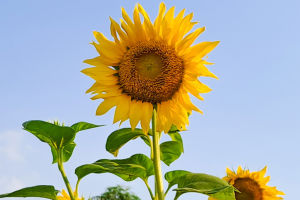Wild mushrooms start as tiny spores that float through the air.
When these spores land in a suitable environment, such as moist forest soil or rotting wood, they begin to grow.
Hey Lykkers, can you guess where these tiny spores end up?
The Mycelium Network
The spores germinate and form mycelium, a complex network of thread-like structures that spread through the substrate. This mycelium absorbs nutrients from the surroundings, preparing for the next stage of growth. It's like the mushroom's hidden root system, working tirelessly underground.
Forming the Fruiting Body
When conditions are right, the mycelium produces the mushroom's fruiting body—the part we see above ground. This fruiting body emerges from the substrate as a small, dense cluster that quickly develops into the familiar mushroom cap and stem. The mushroom is now ready to release spores and continue the cycle.
Spore Release and Dispersal
As the mushroom matures, it reaches the stage where it releases thousands of new spores into the air. This release is a critical part of the reproductive cycle, allowing mushrooms to spread and colonize new areas. The spores are dispersed by air currents, water, or animals, and can travel over long distances before settling in a new location.
Once they land in a suitable environment, these spores germinate and grow into new mycelium, continuing the life cycle of the mushroom. This dispersal process ensures that mushrooms can thrive and reproduce in a variety of environments, contributing to their widespread presence in nature.
The Ecological Role
Wild mushrooms play an essential role in ecosystems by breaking down organic matter and recycling nutrients back into the soil. They decompose dead plant material and other organic substances, facilitating nutrient cycling and contributing to soil fertility.
Mushrooms also form symbiotic relationships with plants through mycorrhizae, aiding in nutrient absorption for both themselves and their plant partners. This interaction is vital for maintaining healthy and balanced ecosystems, supporting plant growth, and enhancing biodiversity.
The Ecological Impact
Understanding the growth and role of mushrooms highlights their significance in both natural and cultivated environments. Their ability to decompose organic matter and recycle nutrients is crucial for maintaining soil health and supporting diverse ecosystems.
By forming symbiotic relationships with plants, mushrooms contribute to a balanced and thriving environment. Recognizing the intricate processes behind mushroom growth and their ecological contributions helps us appreciate their magic and importance in sustaining our natural world.
Unveiling the growth of wild mushrooms reveals nature's enchanting processes and their vital ecological role. Embracing these natural wonders helps us appreciate their magic and significance in our world.


